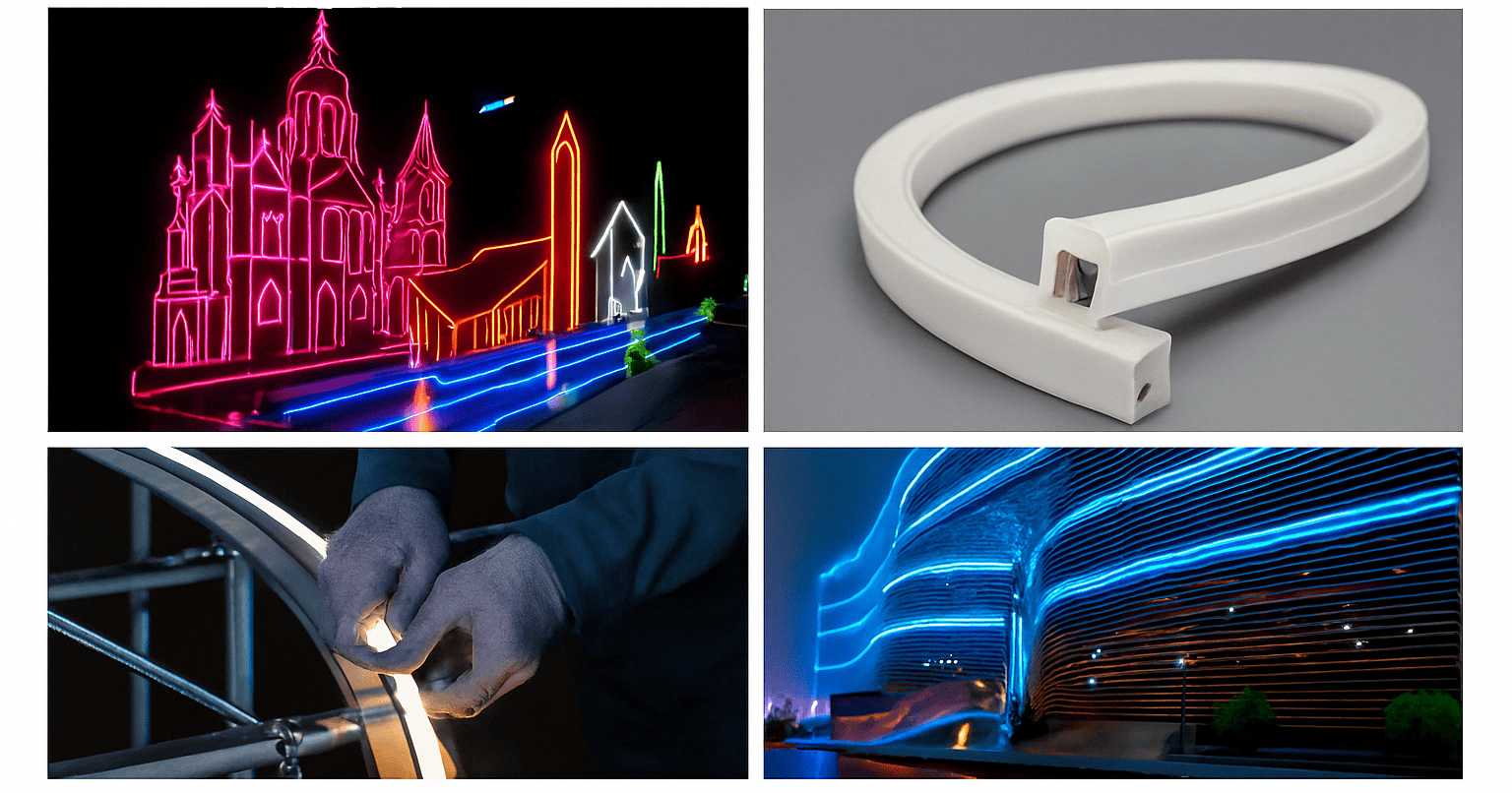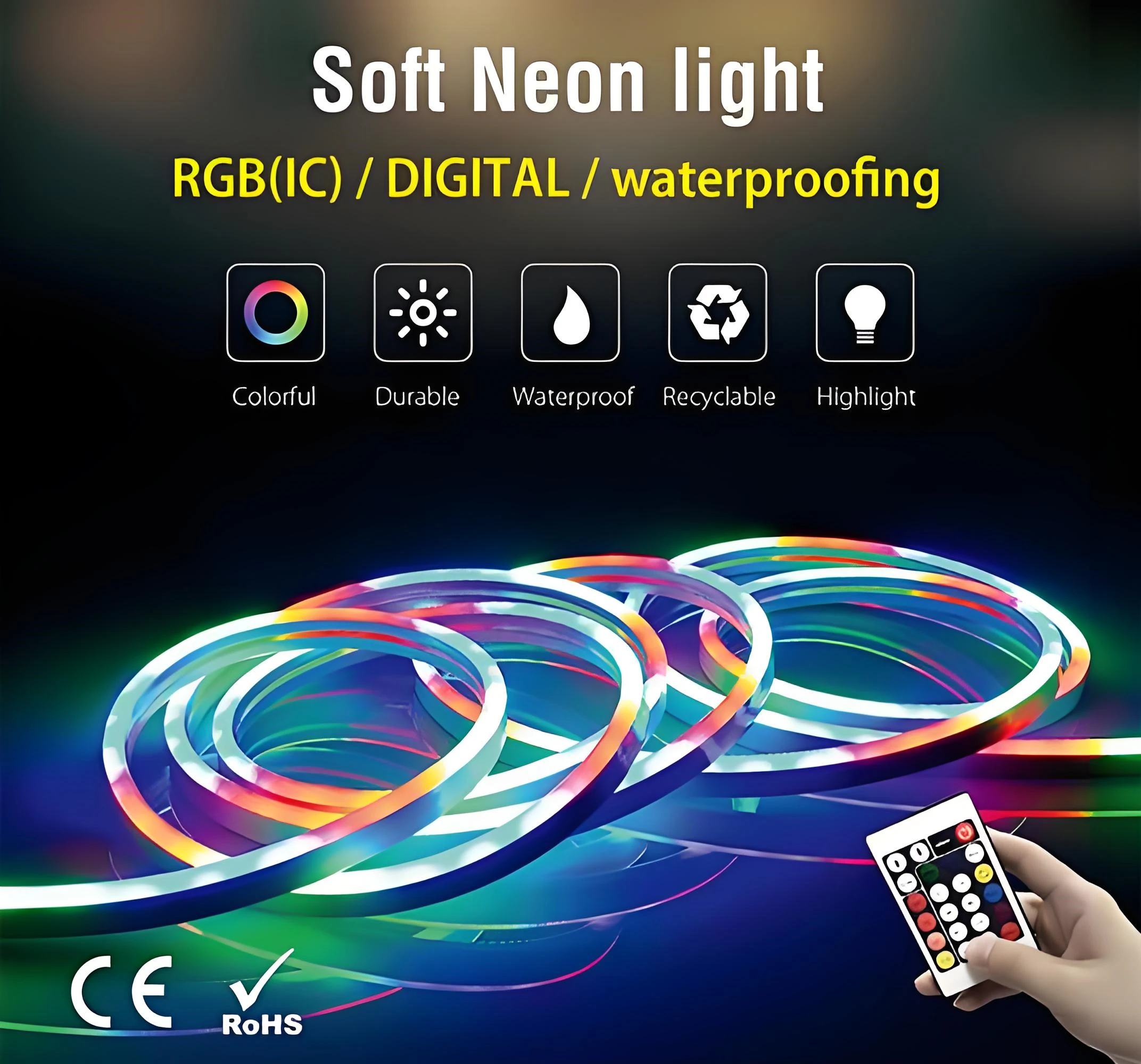It is well known that digitally addressable LED strips are categorized into DMX LED strips and SPI LED strips, which have their own controllers or control systems. It is often thought that DMX control systems have nothing to do with SPI LED strip lighting; however, the truth is that there is a deep connection between DMX control and SPI LED strip control, and this connection is what we will explore in this article.
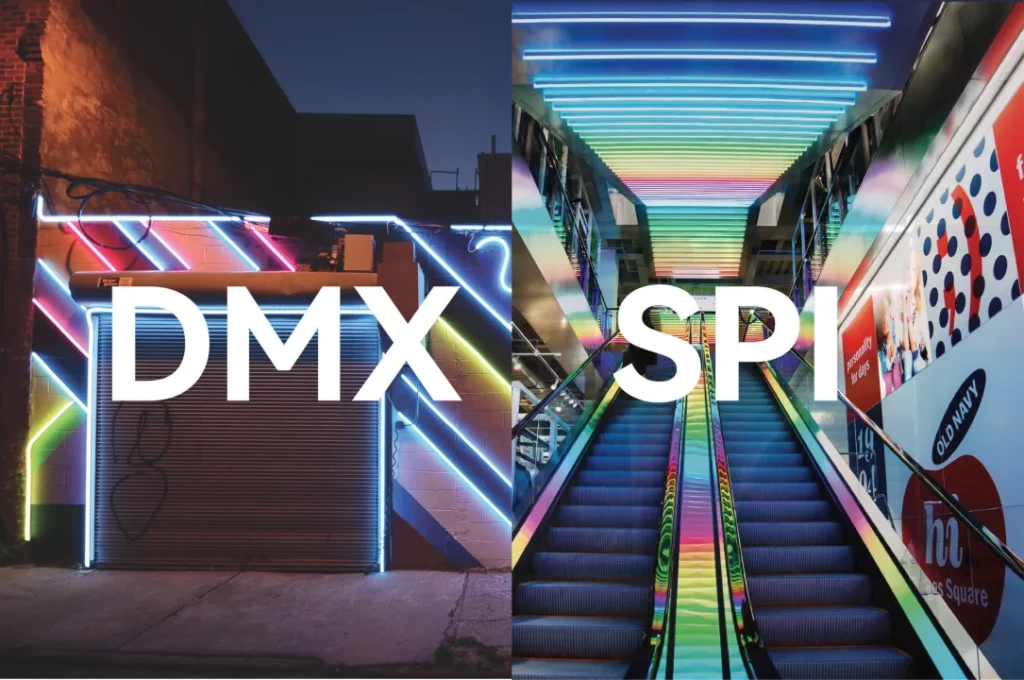
What is the difference between DMX and SPI?
The simple technical answer is that both are communication protocols used to control LED strips. The DMX communication protocol allows the control of individual lights or groups of lights for precise control of brightness, color, and effects. The SPI communication protocol allows the transfer of data between the microcontroller and the peripheral devices, in the case of LED strips. SPI communication protocol allows the transfer of data between the microcontroller and peripheral devices, and in the case of LED strips, SPI allows control of individual LEDs.
The DMX protocol, also commonly known as DMX512, stands for Digital Multiplexing with 512 messages. DMX512 is a digital communication network standard commonly used for controlling lighting and effects. The DMX512 controller uses a 3-wire control method to control DMX LED lights. For architectural lighting, large DC attenuation requires DMX repeaters to be installed at distances of up to 100 m, with the control bus set up in parallel. Under this protocol, an address needs to be set for each lamp, which is usually set by an encoder.
SPI stands for Serial Peripheral Interface and is a synchronous serial communication protocol. It allows you to transfer any type of data. The SPI protocol is commonly used to control addressable (or pixel) LED strips, as it can transfer more than 512 values and can even control up to 1000 individual RGB LED pixels. One problem with SPI, however, is that it is a protocol with no international standard. You may have heard of the WS2811 or TM1914 LED strips, which are different SPI LED strips, which is why it is important that you set up the correct SPI protocol for the pixel LED strip you purchase.
Here we have created a comparison table to simply show the differences:
| Comparison Items | DMX | SPI |
| Control Protocol | Standardized DMX | Simple serial interface |
| Control Method | Asynchronous serial | Synchronous serial |
| Number of Channels | 512 per controller | 1024 per controller |
| Data Transmission Speed | 250 Kbps | >800kbps, up to 2Mbps |
| Signal Transmission Distance | Suitable for long distances | Suitable for short distances |
| Complexity | Complex, Requires DMX controller and more complex setups | Simple, Setup with common controllers |
| Break Continue Function | Yes | Depend on IC type |
| Application | Professional stage and architectural lighting | DIY Projects, Home Decor |
| Cost | Higher | Lower |
So, can all SPI LED strips and regular RGB/RGBW LED strips be controlled by DMX?
In fact, whether you can use DMX control depends on whether the LED strip itself supports DMX signal input or not. For example, UCS512 and TM512 LED strips use ICs that support the DMX512 communication protocol, so they can be directly connected to the DMX lighting control system. If you already have LED strips that do not support DMX signal input, such as SPI LED strips with SPI protocol ICs and ordinary RGB/RGBW strips without any ICs, you can consider using the DMX decoder.
DMX decoders convert DMX signals into signals suitable for LED strips that are not directly controlled by DMX. By connecting a DMX decoder to an LED strip, you can achieve DMX control of a normal strip, so you can add DMX control to an existing LED strip without having to replace the entire strip. There are two most common types of DMX decoders: one converts DMX signals to SPI signals, which are for use with RGB/RGBW SPI LED strips, and the other converts DMX signals to PWM signals, which are for use with normal RGB/RGBW LED strips.
Why is there a DMX to SPI option available?
In order to have an all-in-one device that can control both digital and analog LED strips, the ability to change the SPI output to a DMX output is a necessity. Firstly, it saves a lot of money by not having to buy new LED strips to replace the ones you currently have, and secondly, the ability to add a DMX output and change from SPI to DMX is very convenient for projects that combine different technologies.
How to connect a SPI LED strip to a DMX control system?
You will need a DMX-SPI decoder. The DMX-SPI LED decoder parses the signals from the DMX controller and converts them into a format suitable for SPI communication. This allows each addressable LED to display a specific color and brightness based on the DMX512 data. Standard recommendation: up to 32 devices per DMX line.
DMX-SPI Decoder LED Strip Wiring Diagram:
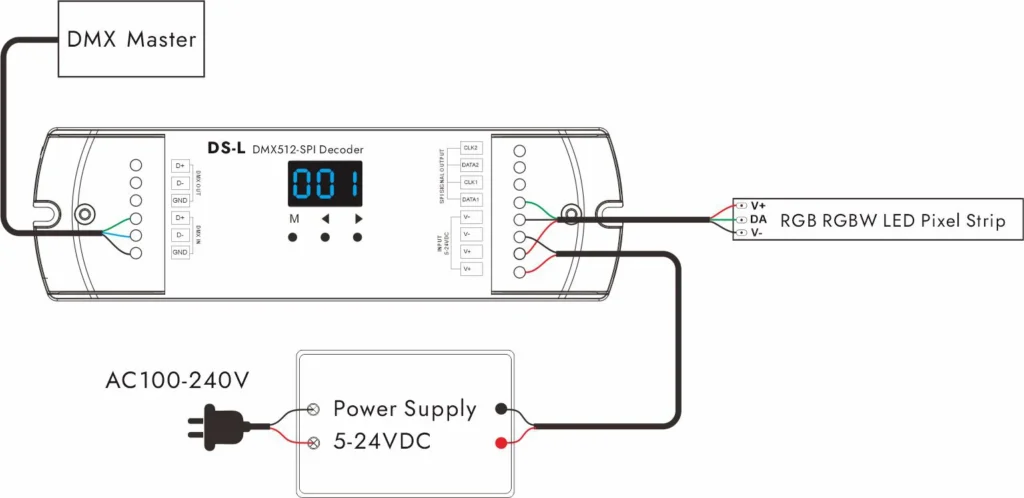
The DMX-SPI decoder information in the wiring diagram is as follows:
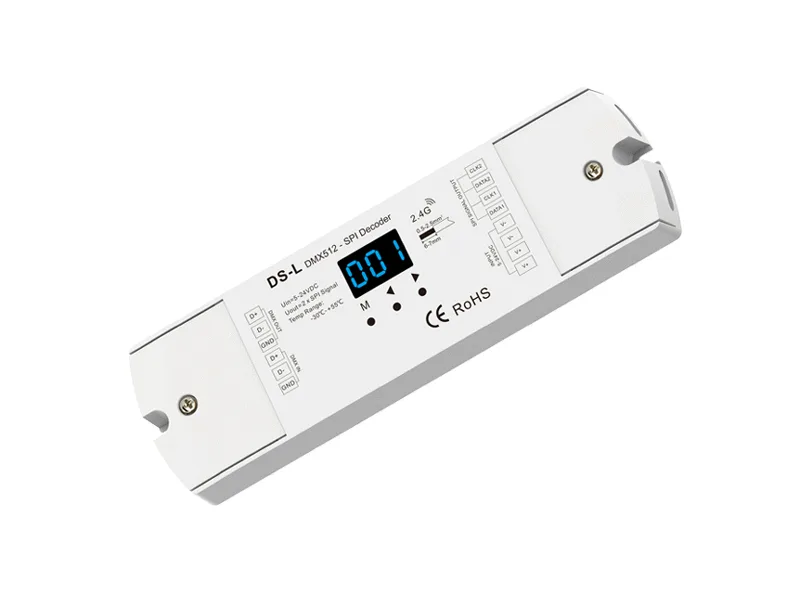
- Model: DS-L
- Input voltage: 5-24VDC
- Power consumption: 1W
- Input signal: DMX512 + RF 2.4G
- Output signal: SPI(TTL) x 2
- Dynamic mode: 32
- Control dots: 170 pixels(RGB 510CH), Max 900 pixels
- Certification: CE, EMC, RoHS
- Compatible ICs: TM1803, TM1804, TM1809, TM1812, UCS1903, UCS1909, UCS1912, SK6813, UCS2903, UCS2909, UCS2912, WS2811, WS2812, WS2813, WS2815, TM1829, TLS3001, TLS3002, GW6205, MBI6120, TM1814B(RGBW), SK6812(RGBW), SM16714(RGBW), SM16703P, SM16714D, WS2813(RGBW), WS2814(RGBW), UCS8904B(RGBW), LPD6803, LPD1101, D705, UCS6909, UCS6912, LPD8803, LPD8806, WS2801, WS2803, P9813, SK9822, TM1914A, GS8206, GS8208, UCS2904, SM16804, SM16825, UCS5603, UCS2603.
For more DMX to SPI decoders, please click here.

In summary, both SPI and DMX controlled LED strips can provide a variety of dynamic lighting effects. While there are decoder devices that convert DMX signals to SPI signals, for specific projects, lighting planners need to consider a variety of factors before making a decision on what is best for the project. For example, for large projects that require long-distance transmission, DMX seems to be the better choice.
For DMX, if one light source is not working, it will not affect the rest of the light sources; however, this is not the case for SPI, as not all SPI ICs have this breakpoint continuation feature. As far as budget is concerned, DMX lamps are usually more expensive than SPI lamps. Last but not least, the expertise of the field lighting professional should be equally valued. Considering time efficiency, field engineers will likely use the protocols they have the most experience with, as spending extra time training and familiarizing themselves with something new can be time-consuming and delay project delivery.
SignliteLED offers a wide variety of DMX and SPI LED Flexible Strips. If you would like to learn more about our DMX Digital Strip Series, please feel free to contact us.
